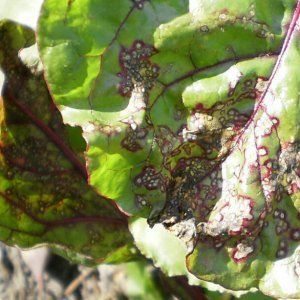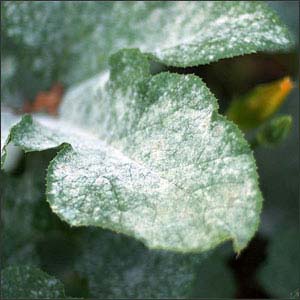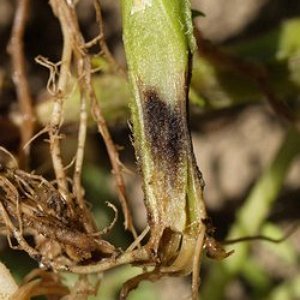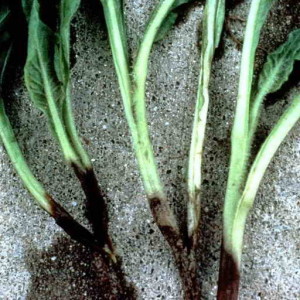The most common beet diseases: a description of the symptoms and effective treatment
Abrupt weather changes, poor quality seeds, contaminated soil can lead to diseases of beets. Both simple varieties and hybrids can get sick. It is important to know the methods of fighting bacteria, infections and fungus, to understand why the tops wither or stains and rot appear.
In the article, we will consider the most common beet diseases, show their signs in the photo and recommend proven remedies.
The content of the article
Beet disease
Beets are grown by gardeners all over the country, be it sunny Krasnodar or cold Novosibirsk. Experienced summer residents recommend preventing diseases with preventive measures and observing the hygiene of the beds.
Fomoz

Fungal disease occurs due to acidic and poor-quality soil or due to contaminated seed... The fungus infects stems, leaves and fruits: beets become gray and rotted.
In order to prevent, summer residents lime the soil and fertilize the beds with minerals. If the disease has already attacked the plant, then effective drugs "Tabu", "Simba" or "Hacker" are used. Use the funds in accordance with the recommendations on the package.
Ascochitosis
The fungus appears in the form of convex spots of various shapes with a dark border. The spots are covered with dots, the leaves dry. The source of ascochitis infection is the remains of old plants and infected seeds.
Heat and high humidity serve as a favorable environment for the development of the fungus. The affected parts of the bushes are treated with a mixture of copper sulfate and sulfur. If the fungus has infected the entire bush, then the plant is eliminated from the beds and immediately burned.
Rhizoctonia
Brown rot is common not only in Russia, but also in other parts of the world. The main harm is caused by rot during the ripening period of beets. Due to rhizoctonia, seedlings appear unevenly, the bushes are strongly stretched in length.
To prevent disease, summer residents are advised to plant beets after corn and other cereals. Professional preparations "Maxim" and "Quadris" help against rot.
Penosporosis
Penosporosis is also called downy mildew. The fungus appears during the flowering period, infects the leaves, which makes them yellow and dry, with curling edges. Dangerous bacteria lurk in the remains of plants and weeds.
To prevent disease, summer residents carefully dig up the beds before sowing and burn all the garbage. To combat penosporosis, gardeners recommend spraying beets with Bordeaux liquid or a solution of copper sulfate.
Cercosporosis
Pale gray spots in a red frame appear on the leaves. The first symptoms may appear as early as mid-June. Soon a velvety gray coating appears. The cause of cercosporosis lies in frequent rains and fogs.
For preventive purposes, potash-phosphorus fertilizers are regularly applied and the soil is loosened. For the fight use the drug "Abiga-Peak" or "Fitosporin".
Rope rot

The disease most often spreads to ripe and harvested crops. It manifests itself in the form of multi-colored mold on fruits. If you do not take action, the beets rots, turns dark brown or black.
Compliance with the rules of harvesting and storage of the crop helps to prevent heap rot.The harvested beets are dried well on all sides in the sun and placed in a cool, dark room. For example, in the basement or cellar.
Powdery mildew
Powdery mildew is a viral disease, the causes of which are hidden in improper care or lack of nutrients.
Powdery mildew appears as a white coating on the leaves and stems. Spraying based on milk whey or kefir is recognized as an effective remedy against the disease. The solution creates a protective film on the surface of the sheet, which prevents dangerous spores from penetrating deeper. 
Bacterial cancer
Beet cancer manifests itself as a growth on root crops... The cause of the disease is in dangerous bacteria living in plant debris. A favorable environment for the development of growths and rot is soil with an increased acidity level. It is treated with the drugs "Tornado" or "Maxim".
Important! To reduce the level of soil acidity, liming is carried out. Before sowing, lime and wood ash are added to the ground.
Fusarium

The disease usually appears in late May or early June. Slows down the development of roots, they have many small processes on the side. Fusarium disease occurs due to a lack of moisture and severe overheating.
Preventive measures against the disease consist in the regular application of organic fertilizers. If the beets are already infected, then gardeners use the preparations "Alarin B" or "Oxyhom".
Mosaic
It appears as dark and light spots on the leaves. The size and shape of the spots are different. Over time, the leaves become wrinkled and thin. Mosaic is a tenacious virus that does not die even in cold winter soil. For prevention, gardeners regularly loosen the beds and remove weeds.
In the fight against mosaic use the drug "Strobi". The effective composition of "Strobi" quickly decomposes in the soil to acid, which means that it is safe for humans. The prepared solution is used within two hours.
Rhizomania
The disease spreads through contaminated soil, water, garden tools. That is why, before planting, all rakes and shovels are disinfected with a solution of potassium permanganate. Rhizomania is also called "beet beetroot", as in case of a disease, the fruits become overgrown with a kind of "beard".
As a preventive measure, potash and nitrogen-containing fertilizers, as well as ash, are added to the soil. For the treatment of rhizomania, the means "Horus" or "Fundazol" are used.
Blackleg

The disease affects the roots, they become weak, after which they turn black and die off... Beets stop growing and acquire a yellow tint. Blackleg develops especially actively in cold and humid summers.
To prevent the appearance of a black leg, liming is carried out before planting, only disinfected seeds are sown, and weeds are removed in a timely manner. Those plants that are badly damaged, gardeners are advised to remove from the beds and burn.
The most common beet diseases
In the open field, beets are most often affected by those diseases that are caused by unfavorable weather conditions, for example, a rainy summer or extreme heat.
Unprotected beetroot beds are attacked by cercosporiasis, phomosis and fusarium. Fungi actively penetrate the plant and develop inside the stem under conditions of high humidity. That is why it is so important not to overmoisten the soil, to observe the irrigation regime.
In the greenhouse and greenhouse shelters, the causes of disease are rooted in contaminated gardening equipment. Before planting, the greenhouse is thoroughly ventilated; a smoke bomb is used to disinfect the earth. Greenhouse beets are more likely to suffer from powdery mildew, mosaics and black leg.
Read also:
Why do beet leaves wither
Why do the leaves wither? The most common reason for the wilting of beet leaves is that they lack moisture and air. However, sometimes the reasons for wilting lie in the fact that:
- beets are sick with a fungus;
- the vegetable is exposed to insect pests;
- the root crop lacks phosphorus, potassium and magnesium;
- summer residents neglect organic and mineral fertilizing;
- the weeding of the beds occurs irregularly.
To prevent wilting of leaves, gardeners recommend feeding the beds with manganese sulfate 2-3 times per season. This requires 5 g of manganese per 10 liters of water. The solution is sprayed on the bushes in the early morning or evening to avoid sunburn.
It is useful to feed beets and wood ash. For 10 liters of water, use 2-3 glasses of dry ash.
Beet pests
Beet midges attack beet beds. These small flying insects suck sap and nutrients from the leaves. Due to the beet midge, the development of culture slows down, the fruits lose their elasticity and taste. What should gardeners do in this case? To combat them, spraying with a solution based on onion peels is used.
The wire beetle and the bear harm beets. Insects penetrate deep underground and destroy the root system. Spraying with Bordeaux liquid helps to fight pests. Before the procedure, be sure to wear safety glasses, a respirator and gloves.
Important! A dangerous pest called the beet nematode negatively affects the roots, causing the leaves to turn yellow and wither. If measures are not taken in time, the beets die.
Preventive measures
In the preventive fight against diseases and pests, both agrotechnical techniques and folk methods help. Among the latter, experienced gardeners use the following:
- Spray the bushes with a whey-based solution. For 5 liters of water, 50 ml of serum is required. The liquid must go directly to the stems and leaves for a protective film to form.
- Treatment of bushes with dry wood ash not only improves the immunity of beets, but also improves its taste.
- Drizzle with aloe juice. The leaves are cut, filled with settled water. For two or three weeks, they insist, after which you need to strain and dilute the concentrate in water (1 tbsp. L. Per 1 l of water). Watering with this solution prevents the appearance of fungal diseases and protects the beets from midges and aphids.
The main thing is to carry out the procedures regularly, once every 2-3 weeks. In particular, beets need additional protection during the ripening period of root crops.
Of the agrotechnical techniques, gardeners recommend the following:
- Dig up the beds thoroughly before planting, remove all plant debris and burn it.
- Observe the rules of crop rotation. Plant beets after cereals or legumes. It is not recommended to plant a crop after carrots or potatoes.
- Liming with ash and lime. Introduce peat or humus into the soil before planting.
Tips & Tricks
General conditions for normal beet growth and high yield:
- plant a crop on nutritious and loose soil;
- check seeds for germination and harden them;
- use settled water for irrigation;
- observe the distance between the beds;
- disinfect inventory, soil and seeds;
- 1 time in 2 weeks apply mineral or organic fertilizing;
- at the first signs of the disease, take immediate action;
- store beets only in a dry, well-ventilated place.
Conclusion
In order for the harvest to grow tasty and of high quality, many gardeners choose hybrids that are resistant to diseases and pests. However, such beets also need prevention. Ash, milk whey, aloe juice come to the rescue.
If the beets are already sick, then professional remedies such as Oksikhom, Kvadris, Maxim help to cure it. In the description of drugs, precautions and recommended dosages are indicated.